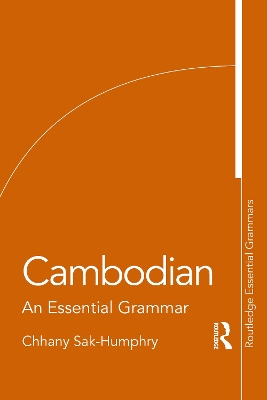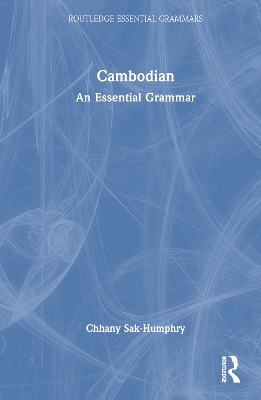Formal Approach to Discourse Anaphora
 -10%
portes grátis
-10%
portes grátis
Formal Approach to Discourse Anaphora
Webber, Bonnie Lynn
Taylor & Francis Ltd
05/2018
204
Mole
Inglês
9781138224056
15 a 20 dias
340
Descrição não disponível.
Acknowledgements; Table of Contents; Synopsis; Chapter 1. Introduction; 1. Statement of the Problem 2. The Range of Discourse Anaphora 3. Historical Background 3.1 Factors Influencing Anaphor Resolution 3.1.1 Number/gender agreement 3.1.2 Backwards Anaphora constraint 3.1.3 Theme 3.1.4 Role Inertia 3.1.5 Semantic Sectional Restrictions 3.1.6 Recency and Scene Shifts 3.1.7 Implicit Causality 3.1.8 Possible Words 3.2 Methods of Simplifying Anaphor Resolution 3.3. Previous Research on Verb Phrase Ellipsis 4. The Range of Antecedents and Referents 4.1 Individuals 4.2 Sets 4.3 Stuff 4.4 Generics 4.5 Prototypes 4.6 Actions, Events, States, Prepositions 4.7 Descriptions 4.8 Predicates 5. Fundamental Assumptions 6. Thesis Organisation; Chapter 2. Definite Pronouns; 1. Introduction 1.1 The Notion of a Discourse Model 1.2 The Importance of Descriptions 1.3 Warnings to the Reader 1.4 Chapter Organisation 2. Factors in forming Discourse Entity IDs 2.1 Noun Phrase Specificity 2.1.1 The Definite/Indefinite Distinction 2.1.2 The Referential/Attributive Distinction 2.1.3 The Specific/Non-specific Distinction 2.1.4 Non-standard Determiners 2.2 Member/Set Information 2.3 Three Uses of Plurals 2.4 Pronouns in the Input 2.5 Alternative Perspectives 2.6 Embedded Noun Phrases 3. Representational Conventions 3.1 Noun Phrases in General 3.2 Singular Noun Phrases 3.3 Plural Noun Phrases 4. Preliminary Rule for Deriving Discourse Entity IDs 4.1 Informal Examples 4.2 Independent Quantifiers and Definite Descriptions 4.3 Dependent Quantifiers and Definite Descriptions 4.3.1 For each... there exists 4.3.2 Class Restriction Dependencies 4.3.3 Quantifiers in class Restrictions 5. Other Factors in Deriving Descriptions 5.1 Tense 5.2 Conditionals 5.3 Disjunction 5.4 Negation 6. Discourse Models and Anaphor Resolution 7. Summary; Chapter 3. "One Anaphora"; 1. Introduction 2. Requirements on a Representation 2.1 Preserving Noun Phrases as Structural Units 2.2 Further Factoring of Descriptions 2.3 Disambiguating Word Senses 2.4 Resolving Definite Pronouns 3. Possible Representations 3.1 Syntactic Surface Structure 3.2 Level-2 Interpretations 4. Identifying Candidate Antecedents 5. Representatives of 'One'-Anaphora 5.1 That and Those 5.2 O 5.3 It 6. Non-explicit Descriptions 7. Summary; Chapter 4: Verb Phrases Ellipsis; 1. Introduction 1.1 Historical Context 1.2 Chapter Organisation 2. System Requirements: Representational & Procedural 2.1 Surface Subjects 2.2 Pronouns 2.3 Existential Quantifiers 2.4 Negation 25 Plurals 2.6 Non-subject Relative Clauses 3. Surface Constraints on Verb Phrases Ellipsis 3.1 Proximity 3.2 Structural Position 3.3 Voice Constraints 3.4 Negation 3.5 Tense and Aspect 4. Resolving Verb Phrase Ellipsis 5. Inference and Verb Phrase Ellipsis 5.1 Conjoined Predicates and 'Headless' relatives 5.2 Split Reciprocals 5.3 Embedded Descriptions 6. Summary; Chapter 5. Conclusion; 1. Summary 2. Future Research 2.1 Data-driven and expectation-driven Processes in Model Synthesis 2.2 Reference Requirements in Limited Contexts 2.3 Sententially-evoked Discourse Entities 3. Epilogue; Bibliography
Este título pertence ao(s) assunto(s) indicados(s). Para ver outros títulos clique no assunto desejado.
Discourse Entity;Discourse Analysis;Definite Pronouns;Anaphoria;Ellipsed Verb Phrases;Linguistics;Noun Phrase;Semantics;Definite Anaphor;Syntax;Parse Tree;Anaphor Resolution;Discourse Model;Tv Today;Plural Noun Phrases;Cotton T-shirt;Verb Phrase;Candidate Antecedents;Definite NPs;Moonlight Sonata;Plausible Antecedent;Indefinite Noun Phrase;Sloppy Identity;Anaphoric Expressions;Ellipsed Verb;Definite Description;Discourse Anaphora;Ellipsis Site;Relative Clause;Verb Phrase Deletion
Acknowledgements; Table of Contents; Synopsis; Chapter 1. Introduction; 1. Statement of the Problem 2. The Range of Discourse Anaphora 3. Historical Background 3.1 Factors Influencing Anaphor Resolution 3.1.1 Number/gender agreement 3.1.2 Backwards Anaphora constraint 3.1.3 Theme 3.1.4 Role Inertia 3.1.5 Semantic Sectional Restrictions 3.1.6 Recency and Scene Shifts 3.1.7 Implicit Causality 3.1.8 Possible Words 3.2 Methods of Simplifying Anaphor Resolution 3.3. Previous Research on Verb Phrase Ellipsis 4. The Range of Antecedents and Referents 4.1 Individuals 4.2 Sets 4.3 Stuff 4.4 Generics 4.5 Prototypes 4.6 Actions, Events, States, Prepositions 4.7 Descriptions 4.8 Predicates 5. Fundamental Assumptions 6. Thesis Organisation; Chapter 2. Definite Pronouns; 1. Introduction 1.1 The Notion of a Discourse Model 1.2 The Importance of Descriptions 1.3 Warnings to the Reader 1.4 Chapter Organisation 2. Factors in forming Discourse Entity IDs 2.1 Noun Phrase Specificity 2.1.1 The Definite/Indefinite Distinction 2.1.2 The Referential/Attributive Distinction 2.1.3 The Specific/Non-specific Distinction 2.1.4 Non-standard Determiners 2.2 Member/Set Information 2.3 Three Uses of Plurals 2.4 Pronouns in the Input 2.5 Alternative Perspectives 2.6 Embedded Noun Phrases 3. Representational Conventions 3.1 Noun Phrases in General 3.2 Singular Noun Phrases 3.3 Plural Noun Phrases 4. Preliminary Rule for Deriving Discourse Entity IDs 4.1 Informal Examples 4.2 Independent Quantifiers and Definite Descriptions 4.3 Dependent Quantifiers and Definite Descriptions 4.3.1 For each... there exists 4.3.2 Class Restriction Dependencies 4.3.3 Quantifiers in class Restrictions 5. Other Factors in Deriving Descriptions 5.1 Tense 5.2 Conditionals 5.3 Disjunction 5.4 Negation 6. Discourse Models and Anaphor Resolution 7. Summary; Chapter 3. "One Anaphora"; 1. Introduction 2. Requirements on a Representation 2.1 Preserving Noun Phrases as Structural Units 2.2 Further Factoring of Descriptions 2.3 Disambiguating Word Senses 2.4 Resolving Definite Pronouns 3. Possible Representations 3.1 Syntactic Surface Structure 3.2 Level-2 Interpretations 4. Identifying Candidate Antecedents 5. Representatives of 'One'-Anaphora 5.1 That and Those 5.2 O 5.3 It 6. Non-explicit Descriptions 7. Summary; Chapter 4: Verb Phrases Ellipsis; 1. Introduction 1.1 Historical Context 1.2 Chapter Organisation 2. System Requirements: Representational & Procedural 2.1 Surface Subjects 2.2 Pronouns 2.3 Existential Quantifiers 2.4 Negation 25 Plurals 2.6 Non-subject Relative Clauses 3. Surface Constraints on Verb Phrases Ellipsis 3.1 Proximity 3.2 Structural Position 3.3 Voice Constraints 3.4 Negation 3.5 Tense and Aspect 4. Resolving Verb Phrase Ellipsis 5. Inference and Verb Phrase Ellipsis 5.1 Conjoined Predicates and 'Headless' relatives 5.2 Split Reciprocals 5.3 Embedded Descriptions 6. Summary; Chapter 5. Conclusion; 1. Summary 2. Future Research 2.1 Data-driven and expectation-driven Processes in Model Synthesis 2.2 Reference Requirements in Limited Contexts 2.3 Sententially-evoked Discourse Entities 3. Epilogue; Bibliography
Este título pertence ao(s) assunto(s) indicados(s). Para ver outros títulos clique no assunto desejado.
Discourse Entity;Discourse Analysis;Definite Pronouns;Anaphoria;Ellipsed Verb Phrases;Linguistics;Noun Phrase;Semantics;Definite Anaphor;Syntax;Parse Tree;Anaphor Resolution;Discourse Model;Tv Today;Plural Noun Phrases;Cotton T-shirt;Verb Phrase;Candidate Antecedents;Definite NPs;Moonlight Sonata;Plausible Antecedent;Indefinite Noun Phrase;Sloppy Identity;Anaphoric Expressions;Ellipsed Verb;Definite Description;Discourse Anaphora;Ellipsis Site;Relative Clause;Verb Phrase Deletion







